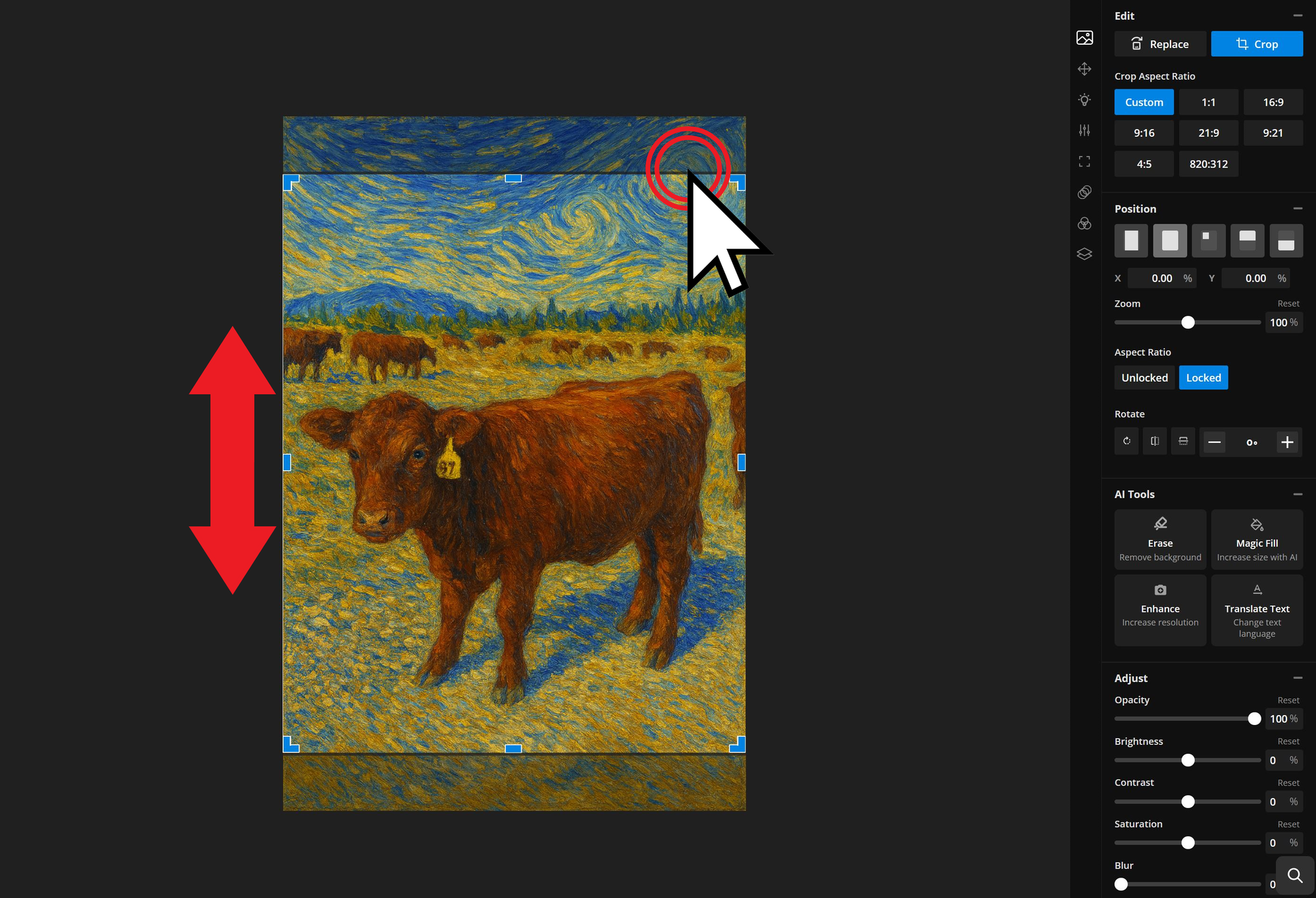How to Turn Your Dog Into a Human Using ChatGPT
It's 2025 — we're turning dogs into humans with ChatGPT now

Each new week seems to bring a new ChatGPT image trend. This time, it’s all about turning your dog into a human. This playful trend uses ChatGPT’s image generation function to imagine what your pet might look like as a person, complete with outfits, hairstyles, and matching vibes.
If you’ve been following our other ChatGPT image guides, you might already be thinking about how to mix generated portraits with your own uploads to create full scenes or visual stories.
In this quick walkthrough, we'll show you how to turn your dog into a human, plus share a few creative ideas to expand on the image afterward.
Table of Contents
- How to Turn Your Dog (or Pet) Into a Human With ChatGPT
- Making Your Images Unique
- Troubleshooting Image Generations
Note: Free-tier users have limited access to image generation and editing tools, so it’s important to be efficient with your prompts. In my testing, free users can generate images, make edits, and upload reference files — but there is a sudden and inconsistent usage cutoff, so try to get the most out of your first attempt by reading through completely.
How to Turn Your Dog (or Pet) Into a Human With ChatGPT
Turning your dog into a human using ChatGPT is surprisingly easy. To create a humanized version of your pet, follow these steps:
- Upload a Reference Image: Click the + icon to attach a clear photo of your dog (or any other pet). For best results, choose an image that shows your pet’s face clearly and without heavy filters or distractions.

- Write an Image Generation Prompt: Ask ChatGPT to generate an image that transforms your dog into a human. A simple prompt like “Create a male human version of the dog in the image I uploaded” is a good starting point.

- Add Extra Details: You can specify extra traits to shape the final image, such as clothing, personality, actions, or facial expressions. For example: “Make the human version wear a flannel shirt and sit on a park bench, smiling.”
Like any other AI image generator, ChatGPT can’t 'think' on its own. To get accurate results, you’ll need to provide as many details as possible, especially when it comes to how the final subject should appear.
One of the most important details to include is the intended gender of the human version of your pet.
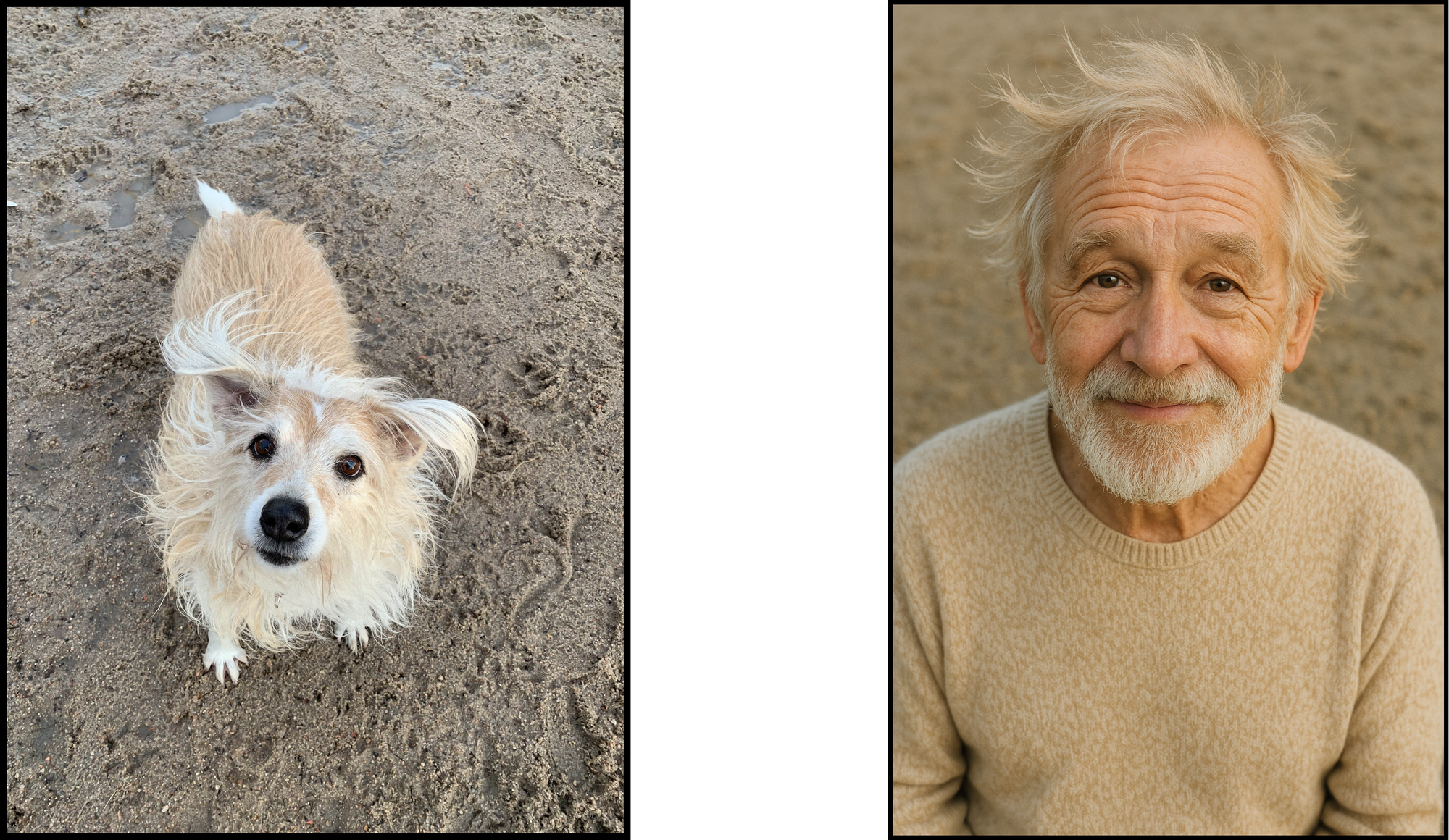
Since ChatGPT doesn’t know your dog, it may generate a human that doesn’t match your pet’s actual gender.
To prevent this, be clear in your wording. For example, use prompts like:
“Create an old male human equivalent of the dog in the image I uploaded” or “Generate an image of a human girl version of my dog.”
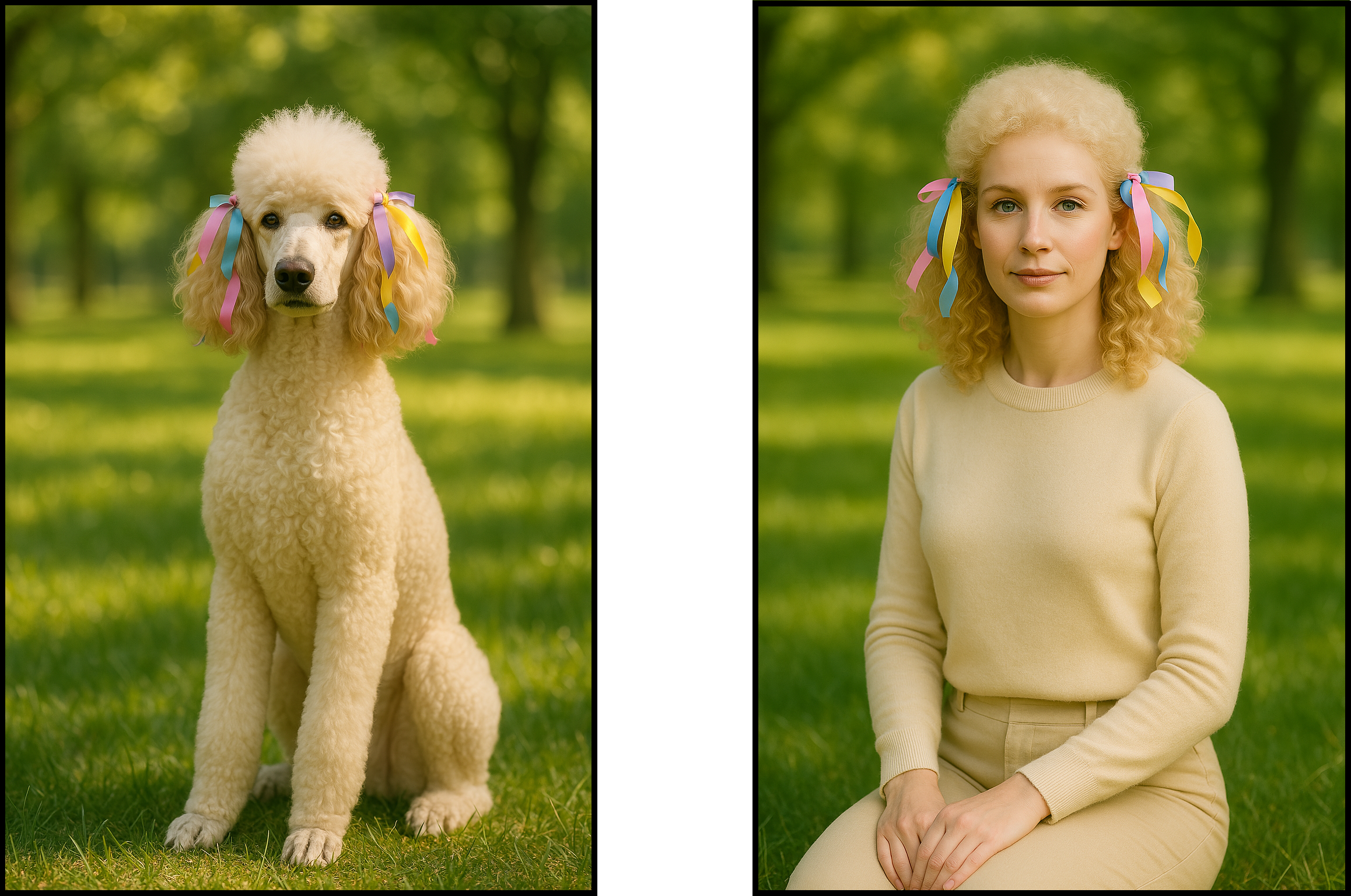
Making Your Images Unique
So you’ve generated an image of your pet as a human — now what? Sure, you can share it with friends and family as-is, but why stop there?
Here are three creative ways to make your image stand out or build on the trend:
Flip the Script — Literally
Another fun approach is to reverse the concept. Instead of turning your dog into a human, take a photo of a person or group and ask ChatGPT to transform them into animals that match their appearance or personality.
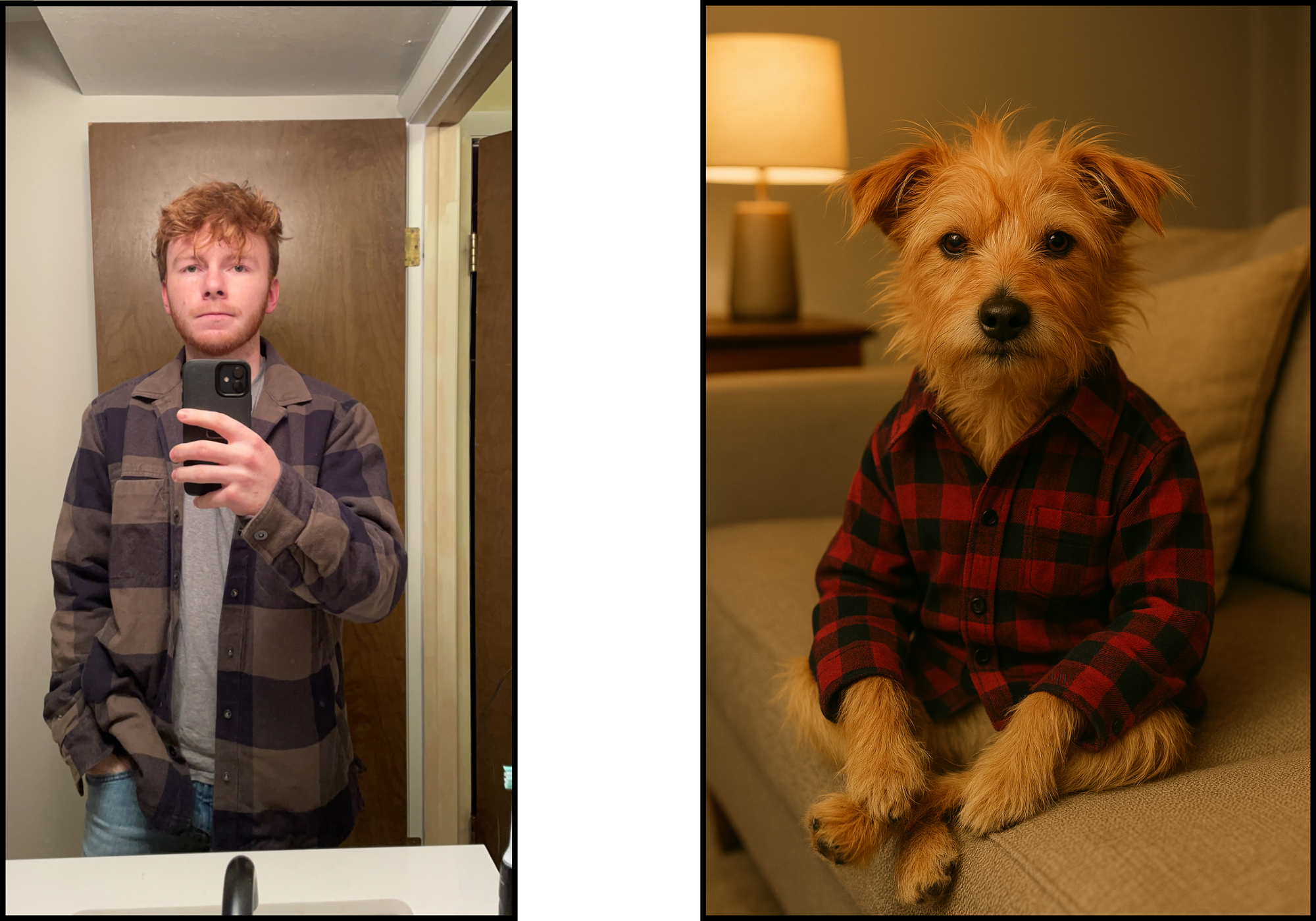
This method is great for sharing with others — you can take a photo of someone and ask ChatGPT to turn them into a dog, cat, or any animal you choose.
Personify Your Pet
If you’d rather not go full human, you can simply personify your pet by giving them human traits while keeping their original form.
For instance, upload a picture of your dog and use a prompt like:
“Create an image of this dog standing like a human, wearing a nice coat and glasses.”
The result is a hybrid image — still clearly your pet, but with expressive, human-like qualities.
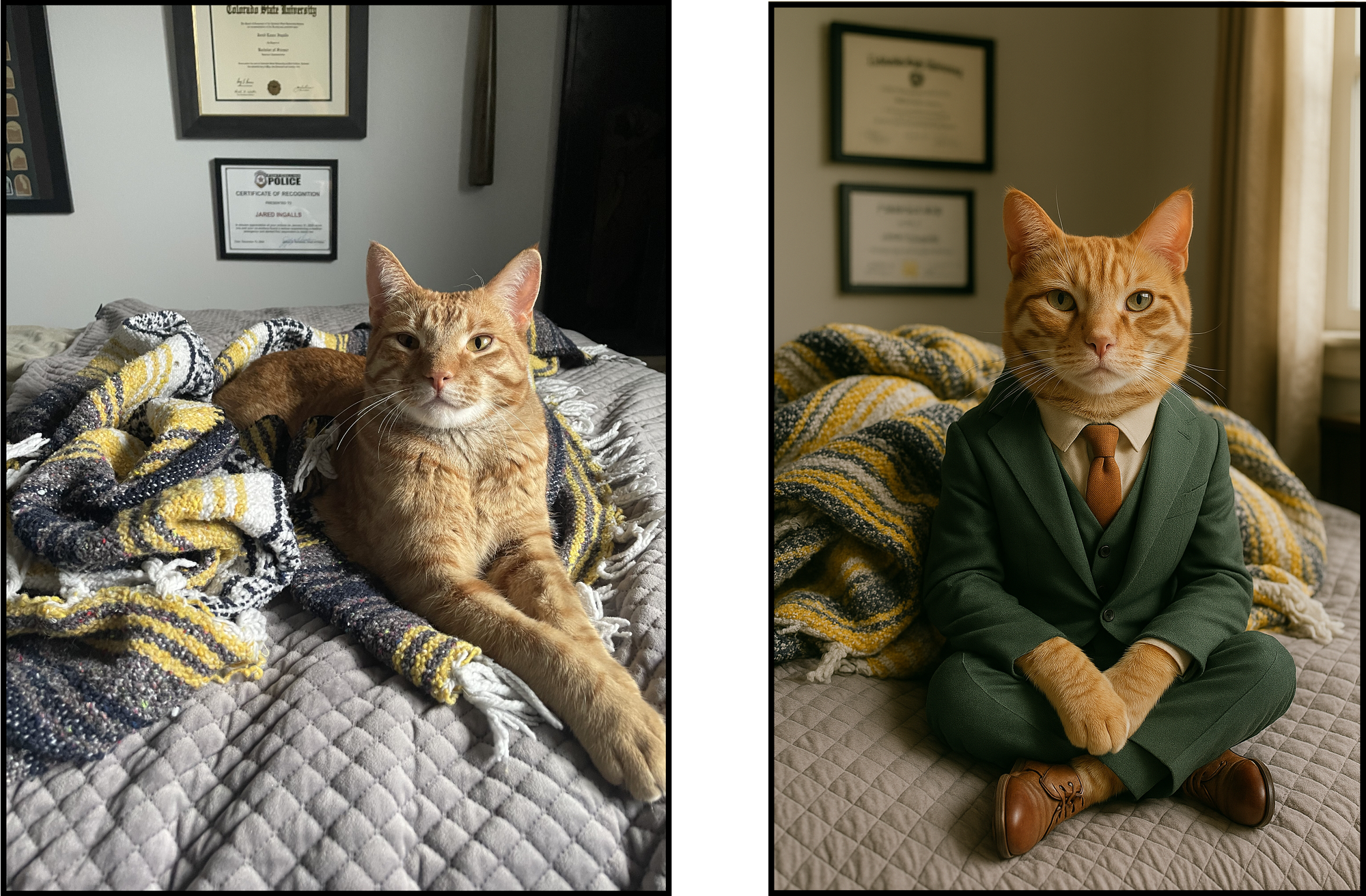
Turn Your Pet Into Art
Whether you're looking to create a memorable portrait of a beloved pet or just having fun with ChatGPT's image generation tools, a classical-style image is a great place to start.
To try it out, simply upload a reference photo of your pet and use a prompt like: "Create an image of this dog in the style of a classical painting."
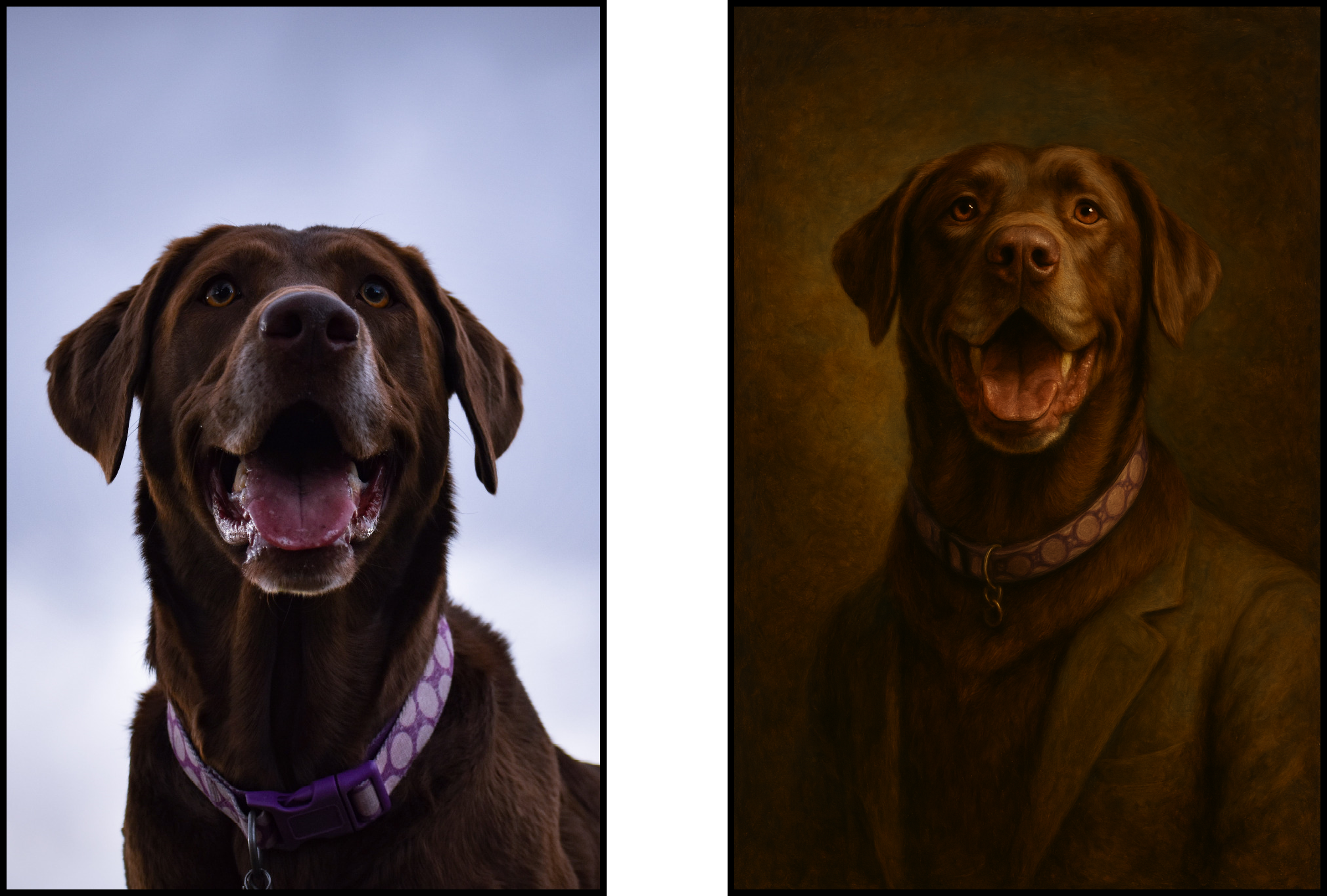
You can even get more specific by mentioning the era, artist, or medium — like oil painting, Renaissance portrait, or abstract-modern.

Troubleshooting Image Generations
Even with practice, ChatGPT can still produce inconsistent results. There is a limit to how much control you have over the generation process since ChatGPT makes many of the creative decisions based on your prompt. Still, I’ve found a few practical tips that help improve output quality, especially when an image doesn't turn out the way you expected.
One issue I ran into often was when trying to personify an animal by adding human characteristics or clothing. ChatGPT tended to default to turning every dog into a terrier. For example, when I asked it to generate an image of my dog wearing a nice jacket and glasses, the result looked nothing like him. It showed a completely different, smaller breed.
To fix this, I revised my prompt and included a more accurate description, specifically stating that the dog I uploaded was a "large, short-haired Labrador retriever." After regenerating the image with that detail, the result looked much closer to the original dog and was easily passable as the same pet.
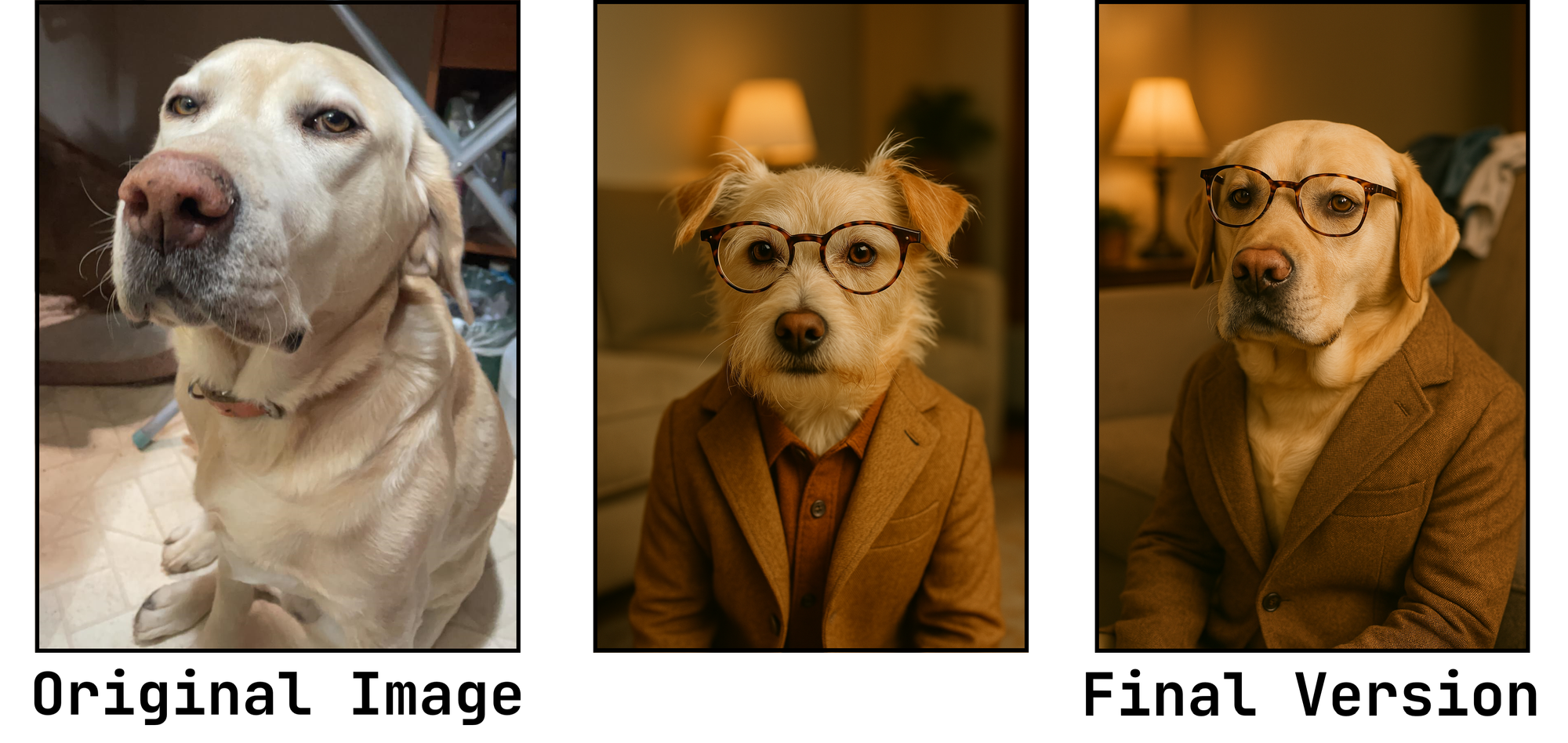
Similar to this, it’s important to know when to regenerate an image versus when to edit. If your first result is completely off the mark, it's almost always faster to regenerate with a revised prompt rather than request edits. ChatGPT’s editing tool works best for small tweaks — it's not ideal for fixing a flawed image from the ground up.
When you do edit, be sure to place your revision prompt directly after the image you want to modify. If too much time passes or the conversation shifts, ChatGPT may lose track of which image you’re referring to and apply your prompt to a newer one instead.
One more tip: ChatGPT currently can’t generate images at specific aspect ratios or resolutions. So if you're planning to post your image on social media or use it in a specific format, you may want to use an online image resizer afterward.
Resizing ChatGPT Images
To resize your ChatGPT generated images, start by uploading them to the Kapwing editor.
Next, select the background of your project to access the Resize Project menu on the right-hand side.

Once the menu is open, use the Size dropdown to choose from preset aspect ratios or enter custom dimensions.
To apply your changes, click the Resize Project button at the bottom of the menu.

Finally, you can fine-tune the crop by double-clicking on your image. This will allow you to reposition it within the frame, making sure all key details are visible before exporting.
